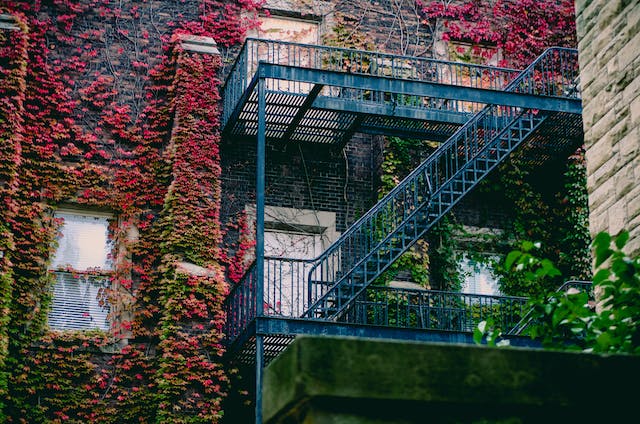
Green Wall Panels: The Perfect Solution for Urban Gardening and Vertical Farming
Green wall panels are emerging as an ideal solution for urban gardening and vertical farming. These innovative panels allow for the cultivation of plants in limited spaces, making them perfect for urban environments. By utilizing vertical surfaces, green wall panels maximize the use of available space, enabling individuals to grow a variety of plants, including vegetables and herbs. This article explores the benefits of green wall panels, such as improved air quality, insulation, and aesthetic appeal.
Introduction
Green wall panels, also known as living walls or vertical gardens, are innovative structures that allow plants to grow vertically on a wall or other vertical surface. These panels are designed to provide a space-saving solution for urban gardening and vertical farming in urban areas.
Urban gardening and vertical farming have gained significant importance in recent years due to the rapid urbanization and limited availability of land in urban areas. As cities continue to expand, the need for sustainable and efficient methods of food production becomes crucial. Urban gardening and vertical farming offer a practical solution to this challenge by utilizing vertical spaces to grow plants and crops.
In this article, we will explore the concept of green wall panels and their role in urban gardening and vertical farming. We will delve into the benefits they offer, including improved air quality, enhanced aesthetics, and increased food production. Additionally, we will discuss the various types of green wall panels available and their suitability for different urban environments. By the end of this article, you will have a comprehensive understanding of how green wall panels can revolutionize urban gardening and vertical farming practices.
Benefits of Green Wall Panels
Enhancing air quality and reducing pollution
Green wall panels play a crucial role in enhancing air quality and reducing pollution in urban environments. These panels are composed of plants that absorb carbon dioxide and release oxygen through the process of photosynthesis. By increasing the amount of oxygen in the air, green wall panels help to purify the surrounding atmosphere and improve air quality. Additionally, they act as natural air filters by trapping and removing harmful pollutants such as volatile organic compounds (VOCs) and particulate matter. This not only benefits the immediate environment but also contributes to the overall well-being and health of the urban population.
Maximizing limited space in urban environments
In densely populated urban areas, space is often a scarce resource. Green wall panels offer an innovative solution to maximize limited space by utilizing vertical surfaces for gardening and farming. These panels can be installed on the exterior walls of buildings, fences, or even freestanding structures, allowing urban dwellers to cultivate plants and crops without requiring large areas of land. By utilizing vertical space, green wall panels enable urban gardening and vertical farming, making it possible to grow a variety of plants, herbs, and vegetables in areas where traditional gardening methods would be impractical or impossible.
Providing insulation and reducing energy consumption
Green wall panels provide insulation to buildings, helping to regulate indoor temperatures and reduce energy consumption. The layer of plants acts as a natural barrier, reducing heat transfer through walls and minimizing the need for excessive heating or cooling. This insulation effect can lead to significant energy savings, as less energy is required to maintain comfortable indoor temperatures. By reducing energy consumption, green wall panels contribute to the overall sustainability of urban environments and help mitigate the impact of climate change.
Creating a visually appealing and aesthetically pleasing environment
Beyond their functional benefits, green wall panels also contribute to the creation of visually appealing and aesthetically pleasing environments. The lush greenery and vibrant colors of the plants add a natural element to urban landscapes, softening the harshness of concrete and steel structures. Green walls can be designed in various patterns and arrangements, allowing for creative and artistic expressions. The presence of greenery has been shown to have a positive impact on mental well-being, reducing stress and enhancing overall mood. By creating visually appealing spaces, green wall panels enhance the overall quality of life in urban environments.
Implementation and Maintenance of Green Wall Panels
Selection of suitable plants for vertical gardening
When implementing green wall panels, it is crucial to carefully select plants that are suitable for vertical gardening. Considerations should include the plants’ growth habits, adaptability to the local climate, and their ability to thrive in a vertical environment. Ideally, plants with shallow root systems, such as ferns, succulents, and certain types of ivy, are well-suited for green wall panels. Additionally, choosing plants that have similar light and water requirements will help ensure their successful growth and maintenance.
Installation process and considerations
The installation process of green wall panels involves several considerations to ensure their stability and longevity. Firstly, it is important to assess the structural integrity of the wall where the panels will be installed. The wall should be able to support the weight of the panels, plants, and irrigation system. Additionally, proper waterproofing and drainage systems should be in place to prevent water damage to the wall and surrounding areas. The panels should be securely attached to the wall, following the manufacturer’s instructions, to ensure they are properly anchored and won’t pose a safety risk.
Irrigation and watering systems
An efficient irrigation and watering system is essential for the health and vitality of green wall panels. Depending on the specific needs of the plants, different irrigation methods can be employed. Drip irrigation systems are commonly used for green wall panels as they provide a controlled and targeted water supply directly to the plants’ root zones. These systems can be automated and programmed to deliver water at specific intervals, ensuring consistent moisture levels. It is important to regularly monitor the irrigation system to ensure it is functioning properly and adjust watering schedules based on seasonal changes and plant requirements.
Regular maintenance and care requirements
To maintain the health and aesthetics of green wall panels, regular maintenance and care are necessary. This includes pruning and trimming plants to control their growth and prevent overcrowding. Regular inspections should be conducted to identify and address any pest or disease issues promptly. Fertilization may be required to provide essential nutrients to the plants, and it should be done according to the specific requirements of the selected plant species. Additionally, periodic cleaning of the panels and surrounding areas will help prevent the buildup of debris and ensure optimal plant growth. Regular monitoring of the overall health and condition of the green wall panels is essential to address any maintenance needs promptly and ensure their long-term success.
Success Stories and Case Studies
Examples of successful implementation of green wall panels in urban areas
One notable success story of green wall panels in urban areas is the One Central Park project in Sydney, Australia. Designed by renowned architect Jean Nouvel, this residential complex features a stunning vertical garden covering its façade. The green wall panels not only enhance the aesthetic appeal of the building but also provide numerous environmental benefits. The project has received international recognition and has become a symbol of sustainable urban development.
Another successful implementation can be seen in the Bosco Verticale (Vertical Forest) in Milan, Italy. This innovative project consists of two residential towers covered with more than 20,000 plants, including trees, shrubs, and flowers. The green wall panels not only improve air quality and reduce noise pollution but also provide a habitat for birds and insects. The Bosco Verticale has become an iconic landmark and a model for vertical greening in urban areas.
Positive impact on communities and urban ecosystems
The implementation of green wall panels in urban areas has had a positive impact on communities and urban ecosystems. These vertical gardens create a sense of connection with nature in densely populated cities, improving the overall well-being of residents. Studies have shown that exposure to green spaces can reduce stress, enhance mental health, and promote physical activity.
Furthermore, green wall panels contribute to the improvement of urban ecosystems by providing habitats for various plant and animal species. They help mitigate the urban heat island effect by reducing ambient temperatures and improving air quality. The presence of greenery in urban areas also helps absorb carbon dioxide and release oxygen, contributing to the reduction of greenhouse gas emissions.
Economic and environmental benefits
The implementation of green wall panels in urban areas brings both economic and environmental benefits. Firstly, these vertical gardens can improve the energy efficiency of buildings by acting as natural insulation, reducing the need for heating and cooling. This leads to significant energy savings and lower utility bills for building owners and residents.
Moreover, green wall panels contribute to the reduction of stormwater runoff by absorbing rainwater and preventing it from overwhelming drainage systems. This helps mitigate the risk of flooding and reduces the strain on urban infrastructure. Additionally, the presence of greenery in urban areas can increase property values and attract more visitors, benefiting local businesses and the economy.
From an environmental perspective, green wall panels help combat air pollution by filtering harmful pollutants and particulate matter from the air. They also play a crucial role in biodiversity conservation by providing habitats for birds, insects, and other wildlife in urban environments. Overall, the implementation of green wall panels promotes sustainable urban development and contributes to the creation of healthier and more resilient cities.
Green Wall Panels: The Perfect Solution for Urban Gardening and Vertical Farming
Benefits of Green Wall Panels
Green wall panels offer numerous benefits for urban gardening and vertical farming. Firstly, they maximize limited space by utilizing vertical surfaces such as walls and fences. This is especially advantageous in urban areas where land is scarce. By going vertical, green wall panels allow for the cultivation of plants in areas that would otherwise be unused.
Furthermore, green wall panels contribute to improved air quality in urban environments. Plants naturally absorb carbon dioxide and release oxygen through photosynthesis. By incorporating green wall panels into urban spaces, the air can be purified and pollutants can be reduced. This is particularly important in densely populated cities where air pollution is a major concern.
Environmental Impact
Green wall panels also have a positive environmental impact. They act as natural insulation, reducing energy consumption by regulating temperature and reducing heat loss. This can lead to lower heating and cooling costs for buildings, making them more energy-efficient.
Additionally, green wall panels help to mitigate the urban heat island effect. This phenomenon occurs when cities experience higher temperatures compared to surrounding rural areas due to the abundance of concrete and asphalt. By incorporating greenery into urban landscapes, green wall panels can help cool the environment and reduce the heat island effect.
Improved Aesthetics and Well-being
In addition to their environmental benefits, green wall panels enhance the aesthetics of urban spaces. They add a touch of nature to concrete jungles, creating visually appealing and vibrant environments. The presence of greenery has been shown to improve mental well-being and reduce stress levels among individuals living in urban areas.
Moreover, green wall panels can provide opportunities for urban dwellers to engage in gardening and farming activities. This promotes a sense of community and connection with nature, allowing individuals to experience the joys of growing their own food and cultivating plants even in limited spaces.
Applications in Vertical Farming
Green wall panels play a crucial role in vertical farming, a method of growing crops in vertically stacked layers. By utilizing green wall panels, vertical farms can maximize their growing capacity and increase crop yields. The panels provide a suitable medium for plants to grow, allowing for efficient use of space and resources.
Vertical farming using green wall panels also offers advantages such as reduced water consumption and the ability to grow crops year-round. The controlled environment provided by vertical farms allows for optimal growing conditions, minimizing the need for pesticides and herbicides. This sustainable farming method has the potential to revolutionize food production in urban areas, ensuring a steady supply of fresh and locally grown produce.
Conclusion
Green wall panels are a versatile and innovative solution for urban gardening and vertical farming. Their numerous benefits, including space optimization, improved air quality, environmental impact, enhanced aesthetics, and applications in vertical farming, make them an ideal choice for urban environments. By incorporating green wall panels, cities can transform their concrete landscapes into thriving green spaces, promoting sustainability, well-being, and food security.




